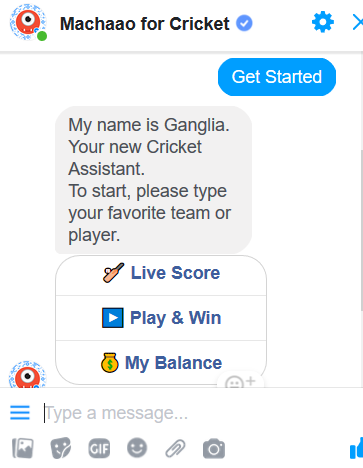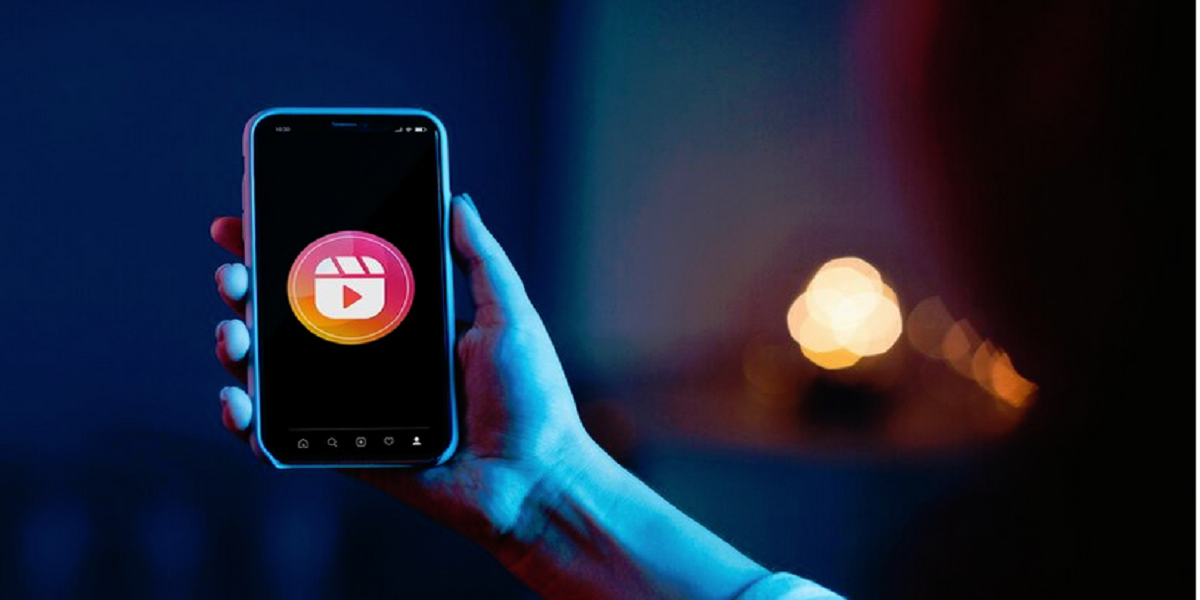
5 Incredible Ways To Boost Online Sales & Improve Customer Retention Using Chatbots
- By Srushti Shah
- 03-03-2020
- Chatbots
Chatbots have undergone a huge transformation in recent years:
They've morphed from being inanimate robots to your friendly neighborhood digital agents.
They've gone from being technically fluent to connecting on a personal, more intimate level.
They're being recognized as 'super-bots' and not spam-masters by customers and businesses alike today.
Here's an example of a super-fast and truly engaging chatbot that delights and informs users at the same time by skilled mobile app developer:

Machaao - A Conversational Bot Offering Cricket Updates
By now you may have understood that in this blog, we will look at real-life examples of brands are using chatbots and going the extra mile to build a rock-solid user base while boosting sales in an organic and genuinely creative manner:
1. Understand Your Customer's Wants, Needs, Desires and integrate it into the chatbot experience
According to a Report by Ubisend, "One in five consumers would consider purchasing goods and services from a chatbot. Plus, around 40% of them actively want offers and deals from chatbots. Saving the best for the last, consumers are willing to spend more than $400 through a chatbot."
Clearly, customers wish to engage with bots, provided they get help and fast-tracked results. Global beauty brands such as H&M and Sephora require a special mention here as they go above-and-beyond to deliver a chatbot experience that caters to the user's needs in a customized manner and assures them that the brand truly understands where the users are coming from:

Some of the reasons that make the bot a HUGE success among the users include:
Truly useful content that aims at solving real problems and achieves the same via makeup tips, how-to videos, and honest reviews.
A personalized quiz that gathers data about the user and offers customized suggestions accordingly.
A relatable and natural language style that uses emojis and simple phrases.
A convenient buying process as the bot redirects the customer to the brand's mobile site/app for purchase which can lower cart abandonment - a phenomenon that's at an all-time high standing at 70% currently!
Key learning: Chatbots have evolved from simply answering dull, one-word questions to actively interacting with the user. E-Commerce brands should invest in creating a bot that addresses the user's concerns and needs in as creative a manner as possible - and without delay, of course!
2. Carve Out a Character, Narrow Down on a Personality - Based on your Buyer Persona
“…Personality is the new user experience.”- Ultan O’Broin, Chatbots Magazine
Before we even talk about the magical phenomena that are a 'chatbot personality,' let's understand why you need it in the first place:
Statista Report, 2018

As you can see, one of the foremost reasons why customers would engage with a bot is to resolve concerns and get relevant answers. This is where integrating a personality into the robotic demeanor can change the customer service game in your favor. Consider the following example for a minute:
A. Domino’s Pizza bot: "DOM" greets customers in a punny way:

Chatbots, by extension, reflect your brand's personality. So you should keep the following factors in mind if you wish to grow your customers as well as retain the loyal ones:
Blueprint of your TG: First things first, you need to kickstart your chatbots journey by doing research into your target audience and understanding key factors such as Your user's life experiences, age, gender, geographical location, pop culture interests, everyday aspirations, language preferences, and habits among other things.
Communication style: You don't want your bots to speak like humans to the extent that it may mislead the user (to think that they're talking to an agent). For example, take a look at the following example:
"Hi there, my name is ____. How can I help you?”
Framing content like this makes it difficult for the user to differentiate whether they're talking to an agent or a chatbot. As you can imagine, it becomes problematic if the right expectation and scope are not from the very beginning. Naturally, customers may feel frustrated if the chatbot comes with limited functionalities and is unable to address their queries instantly. Here's an example of a chatbot that clearly defines its scope and sets the right expectation from a user's perspective:

Language & Tone: An effective and entertaining chatbot is one that effortlessly combines the right mix of friendliness, humor, and information. Using vague phrases such as "No, thanks" can be confusing. It is also extremely critical to not leave your users high-and-dry as demonstrated below:

Favorable Personality Traits to Consider: Research shows that the following personality traits tend to elicit positive responses: Outgoing and helpful; simple, polite and sweet; smart/geeky, and humorous/goofy (not at the customer's expense).
Expert tip: Another important element is understanding which "Platform(s) are used by your target audience" - From social media pages and websites to Slack and third-party online platforms, there are numerous places where you can implement your chatbot. However, remember to choose the most-preferred medium so that you can reach out to a bigger audience in a cost-effective manner.
Key learning: Basis of your research on who your target audience is, the next step is to chalk out the main personality trait(s) of your chatbot. Care must be exercised to ensure that you don't offend them or get too personal - The idea is to charm your customers, not harm their feelings.
3. Conceptualize the "Conversational Flow"
Creating a chatbot without considering the sequence or logical flow can prove to be disastrous as shown in the examples below:
Example 1:

Not only is the text unbearably long, but it is also confusing and can overwhelm (even annoy) the reader. Let's look at another example:
Example 2:

Hand to God, if you were to engage with this chatbot, you'd definitely lose your mind, right? The point we're getting at is rather simple.
Key learnings: Just like any-text based communication, there are certain loopholes to avoid such as:
Long and complex form of content
Use of slang and double meaning phrases
Use of passive-aggressive language
Poor grammar
Repetition of the same phrase, over-and-over
Bombarding the reader with too many questions
At the same time, it is important to ask yourself these questions to frame your content basis your chatbot's inherent personality type:
1. If your brand was be a celebrity/character, who might it be?
2. Will your chatbot be gender-neutral in terms of written language and speaking mannerisms?
3. What would a face-to-face conversation of your chatbot and your customers look like?
4. What kind of conversations do you see your chatbot engaging in? Is it lively and positive/useful and friendly/direct and short?
5. What kind of attributes, attitude, tone, and style will your customers connect with?
6. Where is your customer placed in the sales funnel and how can you convert them into brand loyalists?
4. Focus on the CTA & Infuse with the Main Purpose of the Chatbot
"You can’t download an app for all your problems, however, one day you might use a bot." - Anonymous
When creating the chatbot, the language, tone and style all matter from the user's point-of-view but so does asking yourself this question at every given stage: "What's the next step for the user?"
Here are some key points to note:
Don't ask your user to download heavy images that take forever to load.
Sending too many CTA buttons back-to-back equals spamming - and is a complete no-go.
Inform the users what's needed of them in as short and direct a manner as possible. A clear CTA button works like a charm.
Spell out the general purpose and scope of the bot in one line, at the very beginning as Visabot does in the following image:

Also, note that the CTA button - "Start application" makes it crystal-clear for the onlooker to understand where they're heading and what's to be done next.
Key learnings: The key difference between a high-performing bot and a useless one is that it is clear in its execution, quality-driven in style, and end-result oriented in scope. Plus, it is important to define your end-goal since it helps to understand your bot's functionalities along the way as well.
5. Factor In a Bit of Randomness & Offer Help, Along the Way

It is this kind of witty, heart-warming responses from Siri that makes it one of the most-loved robots in the digital world. Want to stand out from the crowd? You've got to think bold and be prepared for the unexpected. Users may ask random questions or even abandon cart midway, and if you really want to make a good first impression, don't let them stare into a blank screen.
Additionally, you might wonder if there was a mechanism to qualify potential leads and engage in an ongoing customer nurturing program? We have good news for you. Chatbots can do all this and more. Let's look at the following example:

From selling directly to users via integrating payment options in a bot and cross-selling and up-selling to welcoming new users and offering deals and coupons, chatbots prove to be a handy tool to boost sales as well as establish a loyal customer base. As long as you're prepared for the unpredictable, you'll do just fine.
Closing Thoughts
"Global revenue from artificial intelligence is expected to reach $36.8 billion by 2025."
Needless to say, chatbots are here to stay. In fact, Reliance Jio recently launched is artificial intelligence-powered video bot whose primary aim is to understand what we speak, as we speak. Another mind-blowing example that comes to mind is Facebook AI Research Group' and Stanford University's bot which learns and enhances its speech based on other user’s feedback:

A typical exchange between the researchers’ proposed chatbot and a human partner.
With so many inspiring ideas in your back pocket, it's time to put on your thinking caps and come up with exciting ways to engage with the user. The idea is to manifest the virtual equivalent of a human handshake - on your bot screens, of course.
Recent blog

Crafting Eye-Catching Instagram Reels In Just 9 Easy Steps
Social Media | 25-04-2024.png)
Boost Sales and Conversions with Shopify's New AI-Powered Semantic Search
E-commerce | 24-04-2024




